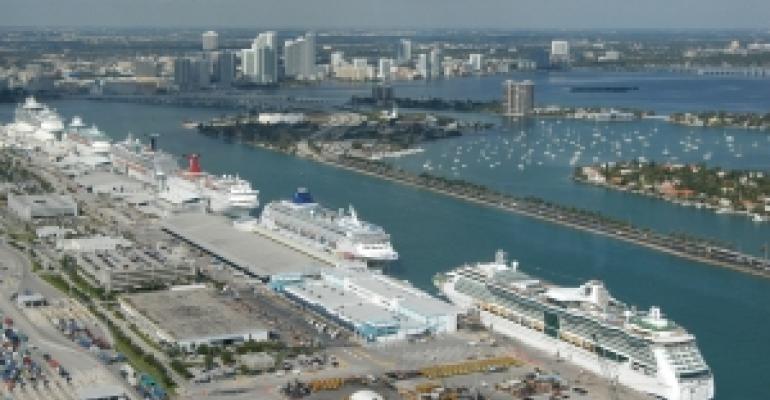The economic impact was 4.3% greater than the $42.2bn in 2012, and cruising supported 363,133 US jobs paying wages of $18.3bn. That is up from 356,311 jobs paying $17.4bn in 2012. Direct spending by cruise lines, passengers and crew totaled $20.1bn, a 2.4% increase.
The findings are from an independent study commissioned by Cruise Lines International Association.
In 2013, 17.61m people cruised on CLIA's North American member lines, a 3.9% increase from the 16.95m the year before. Of those, 10.71m were US residents, up from 10.67m in 2012. Some 9.96m passengers embarked from US ports, a 1.3% decline from the 10.09m in 2012.
The cruise industry impacted the economies of all 50 US states last year, ranging from generating 3,227 jobs and $138m in direct purchases in Missouri to more than 140,400 jobs and over $7.3bn in direct purchases in Florida.
The top 10 US cruise ports accounted for 86% of embarkations. Florida remains the center of cruising stateside with its five cruise ports accounting for nearly 62% of all US embarkations in 2013. California, Texas and New York each had more than 600,000 embarkations.
According to the study, PortMiami led with 2.01m embarkations, a 6.8% increase over 2012, while Port Everglades was second with 1.84m, up 2.7%, and Port Canaveral was third with 1.7m embarkations, down 0.4%. After that, in order, were Galveston, New York, New Orleans, Tampa, Seattle, Long Beach and Los Angeles.
'The Contribution of the North American Cruise Industry to the US Economy in 2013' was prepared for CLIA by Business Research & Economic Advisors (BREA) of Exton, Pa.
BREA found a number of factors influenced the level of growth in 2013 including weak economic conditions in Europe which reduced demand for cruises, especially in the Mediterranean, the continued weak growth in consumer discretionary spending in the US and continued redeployment of capacity from North America to regions like Asia, Australia and the South Pacific.
Plus, capacity growth—which slowed during the Great Recession of 2008-09—continued at a low rate. With the removal of some ships in 2013, the North American cruise industry had a net increase of just one ship, bringing CLIA's ocean-going fleet to 178 ships with 338,505 lower berths, according to BREA. That was a scant 2.8% increase in capacity.
Capacity utilization or occupancy continued to climb, however, reaching 104.7% in 2013, up from 102.6% in 2012 and 102.2% in 2011. In 2010, occupancy was 103.1%.
BREA principal Andy Moody attributed the higher 2013 occupancy to a number of factors including a moderate increase in capacity and more cruising by families and groups leading to higher utilization of cabins—which could partly be a response to weak economic conditions with non-family units 'doubling up.' He also surmised lines with traditionally higher occupancy rates increased their share.
Moody noted the declining capacity growth resulting from recession and weak recovery is expected to reverse, and capacity expansion is projected to increase over the next several years.
While aggregate US embarkations fell 1.3% in 2013, this primarily reflected losses on the Pacific coast due to redeployment away from the Mexican Riviera and a shift of some homeporting to Vancouver, BC, Moody said. US embarkations elsewhere, especially Miami, Fort Lauderdale, New York and Boston, are generally increasing.
The BREA chief noted the Caribbean, in terms of deployed capacity, is maintaining its status as the largest destination market and had a nearly 2% capacity increase in 2013, supporting embarkation growth in ports along the Atlantic and Gulf coasts.
Cruise lines continue to raise spending in the US market despite what many would consider a challenging economic environment, Moody added. Most of the goods and services purchased are for North American-based cruises, but ships in Europe and elsewhere are also supplied with US-sourced products.
Copyright © 2024. All rights reserved. Seatrade, a trading name of Informa Markets (UK) Limited. Add Seatrade Cruise News to your Google News feed.


